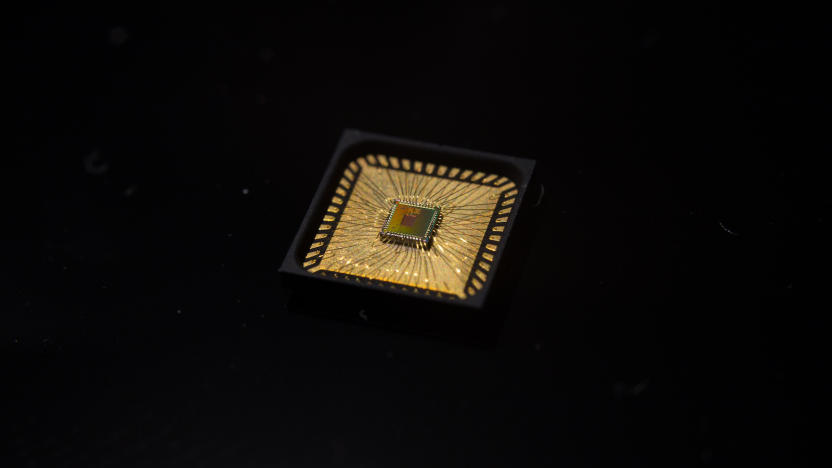temperaturesensor
Latest

Nest's Temperature Sensor is now available for $39
Don't worry if you missed out on pre-ordering Nest's Temperature Sensor last month -- it's now available for purchase, and you can even get it straight from the company's website or from the Google Store. The puck-shaped device works in tandem with Nest's latest Learning Thermostat or its simpler and more affordable Thermostat E. In fact, you can get one bundled with either temperature regulator to save $20 or $10, respectively, if you don't have the company's thermostats yet.

Researchers create temperature sensor that runs on almost no power
Researchers at UC San Diego have developed a temperature sensor that runs on tiny amounts of power -- just 113 picowatts, around 10 billion times less power than a watt. The sensor was described in a study recently published in Scientific Reports. "We're building systems that have such low power requirements that they could potentially run for years on just a tiny battery," Hui Wang, an author of the study, said in a statement.

Tiny wireless sensor never needs a battery
The internet of things is a nice idea, but there's one big catch: you have to power all those smart devices, which is no mean feat when some of them might not even have room for a battery. Dutch researchers think they have a solution, though. They've built an extra-small (2 square millimeters) wireless temperature sensor that gets its power from the radio waves that make up its wireless network. All it needs is energy from a nearby router -- once there's enough, it powers up and starts working.

Wireless Sensor Tags alert you to movement and temperature changes, fit on your keyring
There's plenty of sensor gear around for hobbyists to play with, but not so many polished products for the monitoring-obsessed. Cao Gadgets is attempting to fill that niche with its functionally named Wireless Sensor Tags -- small devices which monitor movement and temperature, notifying you if anything's amiss. A magnetometer registers movement by changes in its orientation, and can inform you of door openings or similar disturbances, while the temperature triggers are based on upper or lower thresholds. The $15 sensors (or $12 if you want three or more) have a battery life that should last several years depending on their setup, but there is one catch -- you also need the Tag Manager hub ($50), which plugs into your router via Ethernet. It keeps in frequent contact with any subordinates in its 200-foot range, and if after several attempts it finds one MIA, a warning can be sent in case any of your home guards have walked or fallen asleep. The tags also have inbuilt beepers which can be pinged to track down any rogue possessions they're partnered with, like your keys. A lot of thought has been put into micromanaging the tags, which are customizable through web-based, Android or iOS apps, and will send out alerts via email, Twitter, or push notifications on slates and phones (text-to-speech is available if you're too lazy to read). If you're into your data, you can also access trigger statistics from the software, complete with graphs. The home monitoring kit is available now, and instead of crashing your browser with too many embeds, we've decided to point you to the source below for the half-dozen demo vids.

Researchers develop tiny, autonomous piezoelectric energy harvester
Folks have long been using piezoelectric devices to harvest energy in everything from dance floors to parking lots, but a group of European researchers have now shown off some novel uses for the technology at the recent International Electron Devices Meeting that could see even more of the self-sufficient devices put to use. Their big breakthrough is that they've managed to shrink a piezoelectric device down to "micromachine" size, which was apparently possible in part as a result of using aluminum nitride instead of lead zirconate titanate as the piezoelectric material, thereby making the devices easier to manufacture. Their first such device is a wireless temperature sensor, which is not only extremely tiny, but is able to function autonomously by harvesting energy from vibrations and transmit temperature information to a base station at 15 second intervals. Of course, the researchers say that is just the beginning, and they see similar devices eventually being used in everything from tire-pressure monitoring systems to predictive maintenance of any moving or rotating machine parts.




